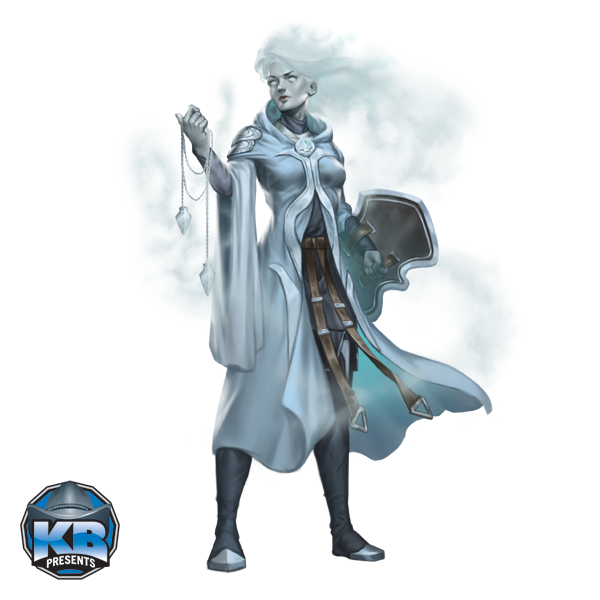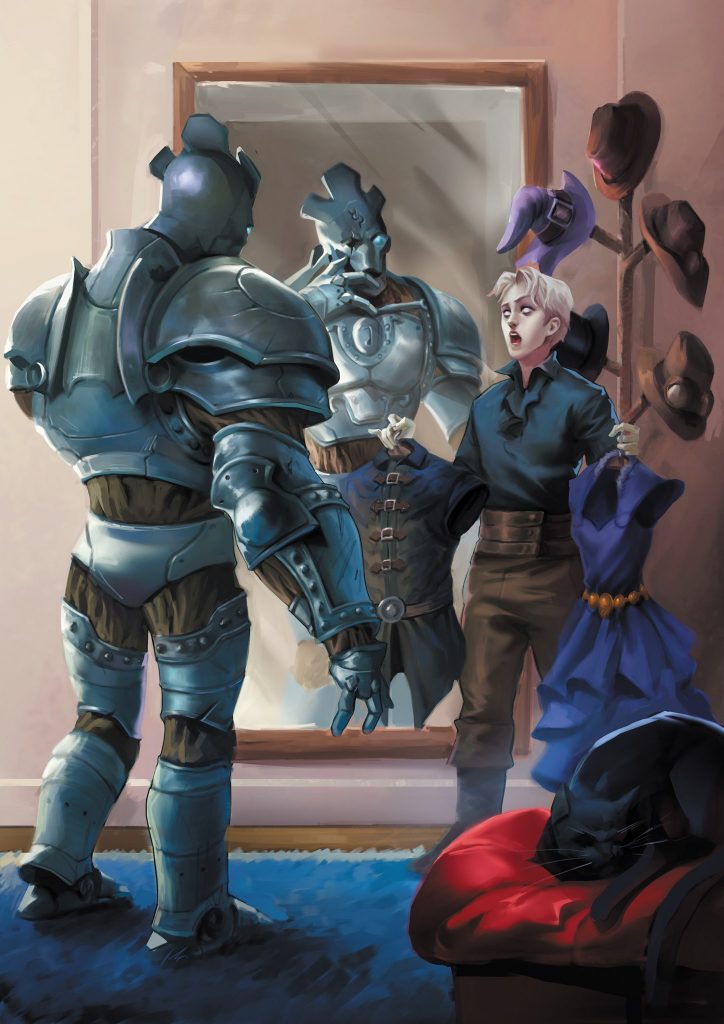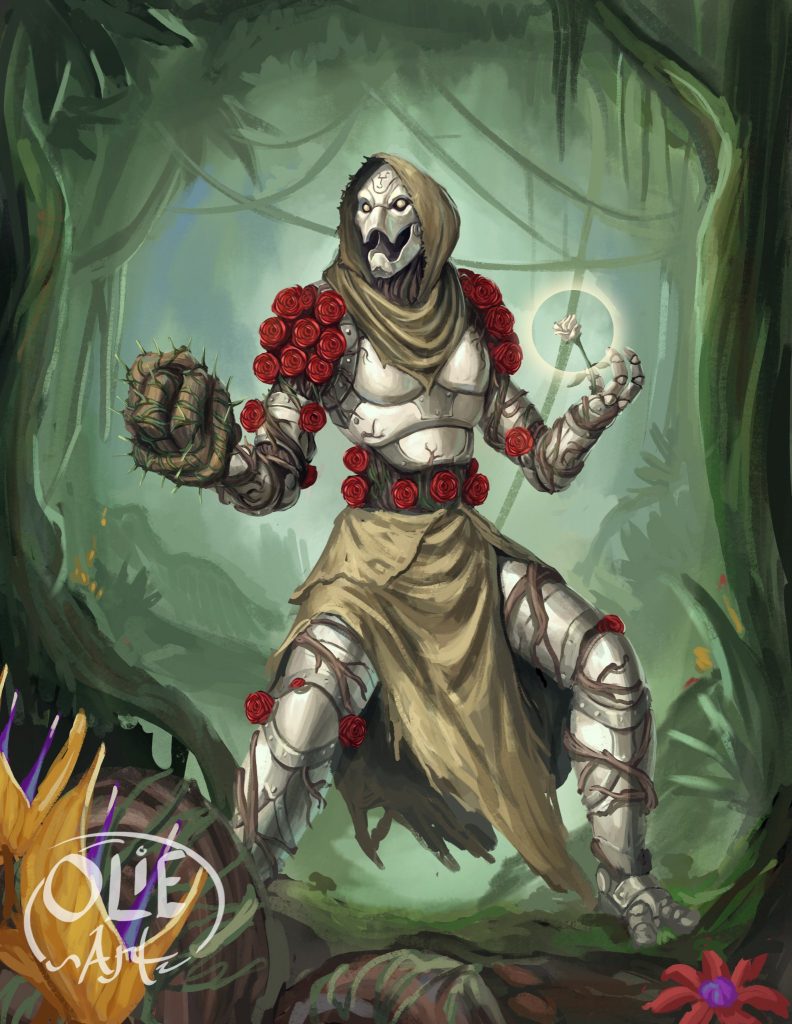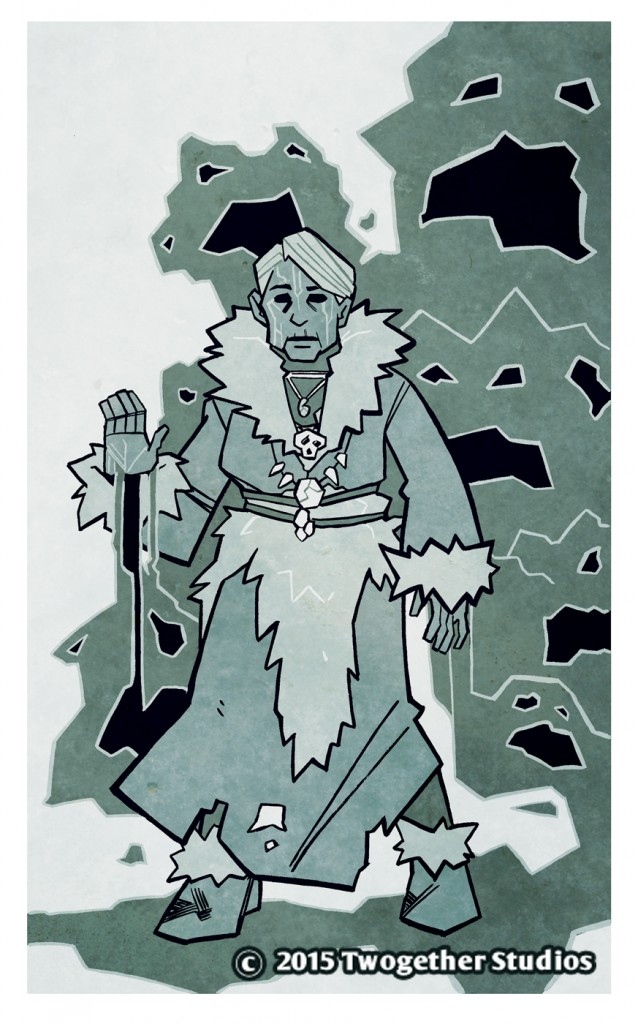
The latest episode of Threshold has been posted on my Patreon for Threshold patrons! In this episode, the crew spends the day at the feast of Bounty’s Blessing. In addition, young Tari meets the Silver Flame missionary Epitaph, pictured above; Epitaph and this art will be seen in the upcoming Frontiers of Eberron!
In the meantime: Each month, I ask my Patreon patrons to submit questions. Sometimes these form the basis of articles, but there’s often questions that are interesting but have short answers. As I’m getting read to do a new call for questions, I wanted to post a lightning round with some of the questions patrons asked in May.
Do the Overlords, and their envoys in the Lords of Dust, have any form of a non-aggression pact towards one another, or is it just a free-for-all should the machinations of one come into conflict with another?
This is addressed in this article. A critical line: “The Overlords weren’t allies and had no interest in cooperation. When the domains of two overlords overlapped they would clash, and many took great joy in these conflicts.”
To begin with, don’t just think of the overlords as powerful rakshasa. They engage with reality on a fundamentally different level than their lesser minions. Overlords are primordial forces that shape reality around them sheerly by existing. In a real way, you can think of overlords as kaiju, like Kong or Godzilla. Mortal lives and cities are utterly insignificant to them and they will sweep them aside without even noticing. Rak Tulkhesh spreads rage and war. He doesn’t meticulously plan out the details of these actions because he doesn’t have to; if he is unleashed in his full power, everyone within his sphere of influence will be consumed by bloodlust and a hunger for conflict. Now, with this in mind, one can ask: could Kong and Godzilla have a non-aggression pact? Well, they certainly might team up in a particular encounter in order to defeat Monster Zero. But it’s not like they’re WRITING SOMETHING DOWN. and the next time they meet, Kong might decide to kick Godzilla’s @$$.
However, THE LORDS OF DUST are a completely different story. They are servants of the overlords and seek to return reality to a state of primordial chaos, but THEY engage with the world on a far smaller scale. Rak Tulkhesh will just sweep over a nation and cause it to collapse into savage warfare, because that’s the power he wields. But MORDAKHESH doesn’t have that power, and HE has to manipulate newspapers and subvert generals and make long term plans. And with that in mind, the PURPOSE of the Lords of Dust and the Bleak Council of Ashtakala IS to facilitate cooperation and communication between the servants of the different overlords in order to prevent unnecessary conflicts. So if Mordakhesh and Hektula find that they both have plans for a particular group of adventurers, they will meet in Ashtakala and try to work something out. And in general, they do manage to avoid unnecessary conflict with one another. But the key word there is “unnecessary”; they will almost always put the interests of their overlord ahead of the interests of the Lords of Dust as a whole… which is a weakness that can potentially be exploited.
How does public education actually work in Khorvaire? Who receives free education? Is it any different in, say, Sharn, particularly the lower wards?
The educational system of the Five Nations is described on page 132 of the Eberron Campaign Setting: “Throughout the Five Nations (or at least what’s left of them), formal schooling is considered a right and a necessary part of every child’s training. Rural manors maintain schools for the sons and daughters of the peasants and laborers. Private tutors provide an education for the children of royal and economic nobility. In towns and cities, schools cater to all who wish to attend. In no case is education mandatory; however, most people understand the advantages offered to them by the remnants of the Galifar education system. Higher education and study is available at a number of colleges and universities, as well as among the religious institutions.” So while they’ve never been specifically mentioned, we can assume that there are public schools in Sharn. With that said, I think it’s reasonable to assume that this system faces the challenges of any public schooling system, and that there are regions — such as the lower wards of Sharn — where schools will be understaffed and underfunded. It’s also important to note that the ECS specifies that education is offered but never mandatory. Nonetheless, the Five Nations do have a reasonably effective public education system… which is why it’s taken for granted that the average person in the Five Nations speaks Common and is literate.
How does Morgrave university works in terms of recruiting new students? How much it can cost per year? Or is it the talent that forms entry barrier, not the money – can they have some sort of research for especially talented young people and offer them free tuition? For example, is it possible that some people from Morgrave notice poor urchin kid on the street and take him in because he is a talented sorcerer and seems like promising/useful student and/or magic user?
Here’s a relevant comment from Wayfinder’s Guide to Eberron:
As a Morgrave student, you’re not an adventurer yet. You’ve got talent, but you’re learning. Consider how your background ties into this. As a noble, are you an entitled rich kid who thinks you’re better than everyone else? As an urchin, did you somehow earn a scholarship, or are you literally sneaking into your classes? As a criminal, you could be the daughter of a Boromar crime boss, or you might be an entrepreneur selling dreamlily to the nobles. A charlatan could be a brilliant drama student or an undercover spy trying to root out enemy agents in the faculty. If you’re an entertainer you might be a prodigy whose talent is only just emerging. A Morgrave story is about coming of age and unlocking your potential. So think about your background as a way to set up the person you’re becoming, as opposed to representing adventures that you’ve already had.
The point here is that I would make the price the price of plot. D&D economics are extremely nebulous, in order to calculate a REALISTIC tuition I’d have to sit down and concretely establish the actual incomes of the different social classes of Khorvaire, which frankly I don’t have the time to do. Hence the suggestion to use backgrounds above. If you want the characters to be students at Morgrave, then they ARE students at Morgrave. If a character’s a noble, then their family is paying their tuition. If they’re an urchin, either they have a scholarship or they are sneaking into classes. The point is, the character is going to Morgrave; I’ll use their story to decide exactly how.
The only time I would want to set a concrete tuition was if it was an important plot point that the character has to RAISE that tuition over the course of their adventures, following the model of The Name of the Wind — but note that in the Kingkiller Chronicles, THE TUITION IS DIFFERENT FOR EVERYONE, which again allows the author to set the tuition at the rate that makes it most interesting for the story. 10 gp could be an insurmountable obstacle to a 1st level character and completely trivial for a 4th level character; so a system that bases the tuition off of what you want it to be for THIS story is going to be more useful than me arbitrarily setting a cost that could be too high or too low for the story you want to tell.
What are the towns inside the Towering Wood like? We know about Greenheart and the feyspire Shae Loralyndar, but are there others? Who lives there, and how are they different than the ones in the western Reaches?
There are very few traditional “towns” in the Towering Wood; the 3.5 ECS notes that “In the great wood, the druid sects and shifters typically live in small communities that are roughly equivalent to thorps and hamlets.” Essentially, these are communities that will be tied around an extended family and live off the land; whenever population grows to a level that strains local resources, a group will split off and start a new home in unclaimed territory. The Towering Woods are vast and population density is extremely low, so there’s no shortage of space. Towering communities employ primal techniques instead of arcane or mundane industry, so you will often find homes that are embedded into living trees or that are made of stone that has been shaped by hand. Envoys—often druidic initiates—travel between family estates, sharing news and needed supplies. Shae Loralyndar is an unusual exception, and there are a handful of satellite elven/Greensinger villages around it, but those represent a distinct culture that’s different from the mainstream—just as there are nomadic shifter tribes that have traditions that are entirely different from the settled folk.
What does prophetic significance look like? Is dragonmark graffiti’d on the wall of a ruined building prophetically significant? How do the Chamber and Lords of Dust recognize this significance?
This could definitely be the subject of a longer article, but in brief: what’s been said about the Prophecy is that it takes many forms and involves more than one element at a time. IE it can be crop circles; fissures formed by an earthquake; graffiti on a wall; an unusual pattern of bloodstains. But this is COMBINED with a particular planar or lunar conjunction, a spike in magical energies, the presence of three dragonmarked people, etc. This is part of why it’s generally only creatures with vast lifespans and enormous resources that are able to interpret it. That graffiti on the wall MIGHT be significant, but unless you’ve been studying the Prophecy for a thousand years (or you’re, say, a cleric of the Prophecy with divine insight) you don’t have the context to fully interpret it.
Can Aberrant Dragonmarks appear on Warforged?
Yes. It’s an extremely bizarre thing that will be seen as a curiosity and draw interest from certain scholars, but it is possible.
That’s all for now! Thanks again for my Patreon supporters for asking interesting questions and for making these articles possible.



